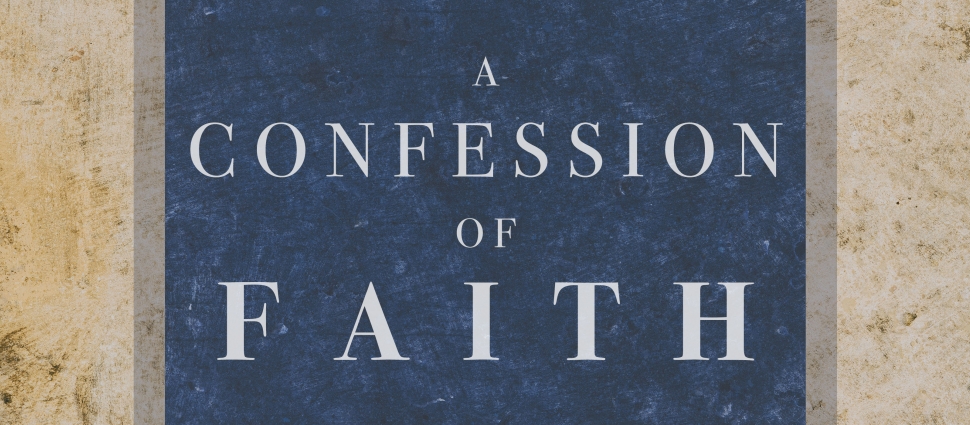Finding Common Ground

In 1616, Henry Jacob, a puritan minister of the Church of England forced into exile in the 1590s, returned to London to gather an independent congregation of believers. This church is often referred to as semi-separatist since Jacob maintained positive relations with many ministers serving within the established Church. Little did Mr. Jacob know that his flock would give birth to a movement that would ultimately become known as the Particular Baptists.
Just over two decades later, after Jacob had emigrated to Virginia and been followed in the ministry by John Lathrop and then Henry Jessey, stirrings in the congregation led to the formation of a new congregation, organized on the principle of believer’s baptism. By 1644, there were seven young assemblies in London, each holding a strong commitment to credobaptism within the covenantal framework of predestinarian theology.
These churches bore a superficial resemblance to the Anabaptists of the European continent, simply because they rejected paedobaptism. While there was no influence or connection with these groups from across the Channel, the misdeeds of some Anabaptist sects during the previous century raised fear and suspicion among leading politicians and theologians in London. The presence of separatist congregations formed without authority or recognition from the Church of England was a novelty, by some considered to pose danger to the status quo. Perhaps these seven congregations would repeat the past and foment rebellion or worse.
Matthew Bingham, in his book Orthodox Radicals tells the story well. The Westminster Assembly, meeting at that time to move forward the reformation of the Church of England, demanded that the leaders of these “baptistic congregational” churches provide evidence of their orthodoxy. The situation was tense and dangerous, the result being the publication of a confession of faith, released in the final quarter of 1644. From the perspective of the seven assemblies, this confession was an attempt to find and express common ground with each other (since representatives of each church openly signed the document) and also with the paedobaptist puritans in the national church. It was important to demonstrate orthodoxy in order to relieve the stress of the situation.
Notable observers, including several participants of the Westminster Assembly, examined the published confession. While they found minor faults with it, they begrudgingly acknowledged its orthodoxy, though at least one suspected that it was only an attempt to hide more nefarious doctrines and practices. In response to some of these critiques, the representatives of the new churches revised their document and released a new version in 1646. The changes reflect the original purpose—finding common ground. In many cases, words and phrases were altered directly in response to the appraisals of the paedobaptists. Even their language about baptism was softened! This First London Confession became the basis for the spread of their views around the kingdom. It was adopted by many congregations as they sprang up in different places.
The original seven London churches were outward looking, desiring to spread the good news of Christ to others in the nation. Around 1645, the church frequently identified with its long-serving pastor William Kiffen sent a man named Thomas Collier to the West Country (counties such as Devon, Wiltshire and Somerset). His task was to preach and plant churches, and he was quite successful in doing this, becoming the most prominent leader of the baptized churches in the West. In the early 1670s, Mr. Collier began to exhibit serious doctrinal deviations, and Christians in the churches he planted became deeply concerned. In 1674, he published The Body of Divinity, or, A Confession of Faith, being the Substance of Christianity: Containing the most Material things relating to matters both of Faith and Practice. This book quite clearly crossed the borderlines of orthodoxy in many areas—trinitarianism, the person and work of Christ, the nature of faith, eternal punishment and more. Given his prominence, this was a difficult situation. Since Collier titled his book A Confession of Faith, the possibility existed that his doctrinal views were representative of the London church that originally sent him and also of the churches he planted. Was it possible that the entire Particular Baptist movement had fallen into heterodoxy and even heresy? Something had to be done.
In response, leaders of churches in Bristol and the West asked for assistance from the elders of the London churches. Meetings were held, books were published, but Collier dug in his heels and refused to renounce his serious deviations. He had been sent out while the First London Confession was the standard for many churches. Could it be that it was not a true statement of belief but rather a mis-direction ploy intended to hide the real beliefs of the churches? Was Collier now disclosing the true doctrines of these churches? The 1670s were a period of persecution. Puritan ministers had been driven out of the Church of England in 1662, and the “non-conformists” faced serious penal statutes. If Collier’s doctrines represented the mainstream of the Particular Baptist churches, there was even more reason to oppress them.
The result of this incident was the publication of a new confession in 1677 (often called the 1689 confession, though it was first published in 1677). Modeled after two documents (the Westminster Confession of Faith of 1647 and the Savoy Declaration of 1658) that didn’t exist when the first confession was published, it was another attempt to demonstrate orthodoxy. Perhaps counter-intuitively, by basing this Second London Confession on these two confessions, the subscribing churches were exposing themselves to further persecution and opposition, but they were not seeking approval from the Bishops; rather they were striving to demonstrate orthodoxy in the midst of crisis. The title page indicates that it was “put forth by the elders and brethren of many congregations … in London and the Country,” a clear indication that it was published in response to Collier’s aberrations.
This confession was also an effort to demonstrate common ground in at least two ways. On the one hand, the first paragraphs of the epistle To the Judicious and Impartial reader affixed to the front of the document assert that it manifests the identical doctrines contained in the First confession. So far as these churches were concerned, First London and Second London taught the same things. This is evidenced by the fact that quite a few phrases from the first confession were incorporated into the new confession; even when the words and phrases differ the substance matches. On the other hand, the same epistle explains that they had no wish to “clog religion with new words” and since the Presbyterians and Congregationalists had published confessions of faith, it was decided to build upon their foundation. They express “hearty agreement … in that wholesome Protestant doctrine” expressed by Westminster and Savoy. The principle of common ground is the same. Just as the first confession sought to ameliorate opposition and demonstrate orthodoxy, so also did the second. Both statements tied the baptized churches to the historic Christian faith and provided evidence that Collier’s aberrations were his own and not characteristic of the churches at large.
There is a third document that expresses common ground. In 1693, at a general assembly of Particular Baptist churches, the pastor of London’s Petty France church, William Collins, was asked to adapt the Westminster Assembly’s Shorter Catechism for use by the families of the baptized churches. The adaptation was soon published and has since been known as the Baptist Catechism. The relationship between the two catechisms is obvious, even with the understandable revisions supporting credobaptism.
These three documents, originating from Particular Baptist authors and churches, themselves share common ground, for they consistently teach the same system of theology. Though expressions are different in each, there is fundamental agreement between them. Together they present a summary of the faith of their churches for a period of fifty years and beyond.
Common ground was achieved in three ways. First, there is the theological agreement with English puritans demonstrated by the orthodoxy of the First London Confession, followed by the 1677 confession and the 1693 catechism. The first confession served its purpose well, for by the 1650s the London Particular Baptist churches were recognized as legitimate participants in the religious life of the nation. The other documents clearly testified that these baptized churches subscribed to the “form of sound words” (2 Timothy 1.13). Secondly, the common theology expressed in the First and Second confessions and the Catechism demonstrates the harmony of faith throughout half a century of church life, both within their movement and with the ejected ministers and persecuted paedobaptist churches from 1662 until freedom came in 1689. Mutual recognition and support were possible. And thirdly, there is the consonance of doctrine between the three Baptist documents. They teach the same system of theology.
Author’s Note: Recognizing the above, the Trustees of IRBS have adopted these three documents as the doctrinal standards of our Seminary. We are pleased to rest on the solid foundation of our seventeenth century fathers, and to follow the straight paths they set before us. In this sense, we are truly a confessional seminary, for we confess and teach the doctrines set out in the First London Confession, the Second London Confession, and the Baptist Catechism.
James Renihan (PhD, Trinity Evangelical Divinity School) is President and Professor of Historical Theology at IRBS Theological Seminary, Mansfield, TX. His academic work has focused on the Second London Baptist Confession and its broader Puritan theological context. He has been published in many journals, and is the author of multiple books including Edification and Beauty, A Toolkit for Confessions, True Love, and Faith and Life for Baptists.
Related Links
Podcast: "Confessional Subscription and the Minister’s Integrity"
"Confessing Christianity: Yesterday's Reformation for Today's Reformation" by Chad Van Dixhoorn
Daily Devotional: "Through the Westminster Confession"
The Need for Creeds Today by J. V. Fesko
The Creedal Imperative by Carl Trueman





